| This is Mike, a former Peace Corps Volunteer, and his daughter Kate, helping dust the ashes from the rocks in this ritual. |
As each rock hit the bottom of the pit, a tremendous amount of steam roiled and the water started to boil. When the bottom was lined with rocks, large banana tree leaves were placed around the walls of the pit with the tops flopping out. I didn’t understand the purpose of these leaves until later. Next, the women started to pour baskets of the prepared vegetables into the pit. First the papas and camotes, the potatoes. Then choclo (corn on the cob) and bags of habas, or lima beans. At this point, it was decided that another layer of rocks were needed and the leftover corn shucks were added to keep the food from touching and burning directly on the rocks. The wrapped chicken packets, half cabbages, large heads of broccoli, large plátanos, whole piñas (pineapples) and more hot rocks were layered into the pit.
When the pit was full, we were each given a branch of an aromatic herb. We were asked to contemplate a wish or offer a prayer before tossing the branch onto the food. In this way, the food in the hole gave us sustenance spiritually, as well as physically. To form a lid, they folded the tops of the banana leaves over the hole. Finally, a canvas tarp was placed on top and the original dirt from the hole was shoveled onto the tarp.
| Here is my colleague and friend Ernesto, helping place the tarp over the cooking food. |
| Flower petals were lovingly placed in a spiral on the mound. |
At about this time, local musicians showed up and a dance circle was initiated to pound down the soil and form a seal for the steam. I threw off my shoes and joined the circle. Dancing in the sprinkling rain, with mud squishing between my toes, I gave thanks to Pachamama for all the beautiful blessings and nourishment she has given me this past year and I asked her for another year of inner peace, exploration, and connectedness with all that I am living. It was a really beautiful moment.
| In addition to the flag featuring the Andean agricultural calendar, they also hung the rainbow flag of the Ecuadorian Indigenous people. |
| The pineapple was sliced and our feast was served with bowls of ahi (salsa) and five different types of fresh juice. |
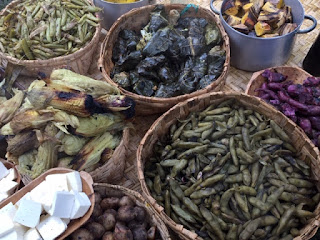 |
| Pictured in this photo are baskets of habas, packets of pollo, a pot of plátanos, camotes, papas and choclo with some queso freso cheese. |

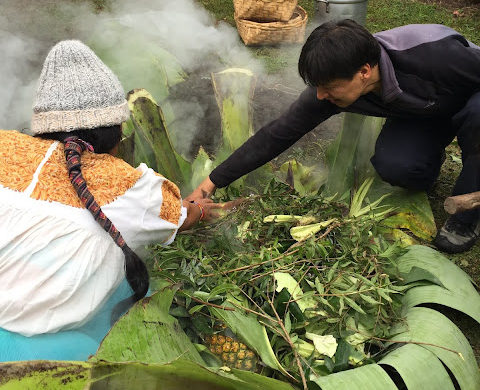
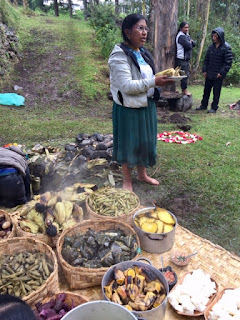
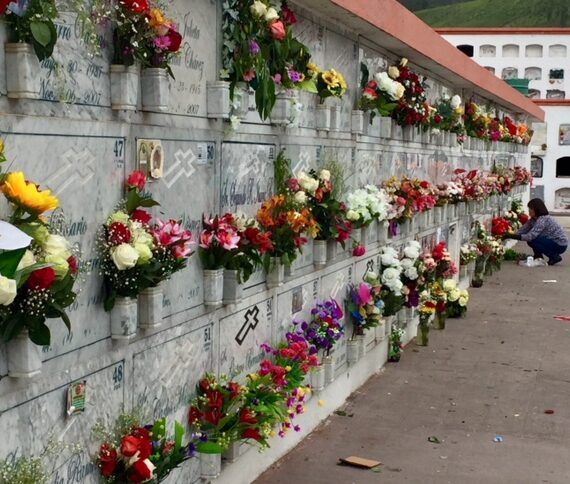
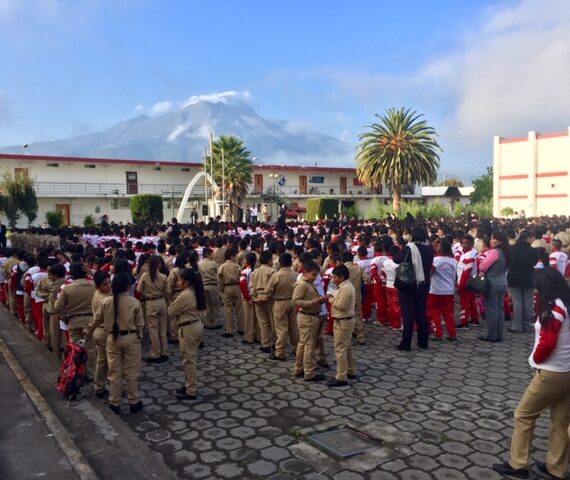

Ms. Long
What a beautiful ceremony and rich tradition. What an amazing experience! Thank you for sharing.